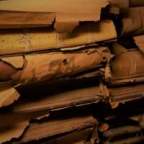×
If you have a question regarding coaxial, telephone, and building wire, power cable, insulation, extrusion, bunching, stranding, braiding, etc. post it here.
Insulation Dia for Impedance requirements
- Archived Forum Admin
-
 Topic Author
Topic Author
- Offline
- Platnium Boarder
-

Less
More
13 years 3 months ago #619
by Archived Forum Admin
Replied by Archived Forum Admin on topic Re: Insulation Dia for Impedance requirements
Dear Sir,
Sorry to bother you on this issue again. But there is an interesting phenomena observed as I was taking some production & testing trials.
While testing the 10 mtrs pair for Characteristic Impedance in uncoiled form (Straight), the impedance values are observed absurdly high. But when tested the same pair in coiled form the values observed are perfectly as per the theoretical calculations. Can you please explain this difference and guide us for the correct method of testing.
We are measuring the Zoc & Zsc values and then calculating Z as Sqrt (Zsc x Zoc).
Thanking You
Sheks
Sorry to bother you on this issue again. But there is an interesting phenomena observed as I was taking some production & testing trials.
While testing the 10 mtrs pair for Characteristic Impedance in uncoiled form (Straight), the impedance values are observed absurdly high. But when tested the same pair in coiled form the values observed are perfectly as per the theoretical calculations. Can you please explain this difference and guide us for the correct method of testing.
We are measuring the Zoc & Zsc values and then calculating Z as Sqrt (Zsc x Zoc).
Thanking You
Sheks
Please Log in to join the conversation.
- Archived Forum Admin
-
 Topic Author
Topic Author
- Offline
- Platnium Boarder
-

13 years 3 months ago #620
by Archived Forum Admin
Replied by Archived Forum Admin on topic Re: Insulation Dia for Impedance requirements
Hello again Sheks,
That is a question not easily answered from so far away because I cannot see what is going on. Your uncoiled measurement should have been, in my opinion, the reference so something really strange is going on. There must be more happening here than the information you have given us.
Make sure there are no shields and as far as the coiled sample goes, make sure it is not on a metal reel.
Hopefully another reader will have more to contribute but please note the following for twisted pairs:
For higher frequency transmissions in open line copper conductors, the characteristic impedance is determined by the following simplified equation:
Z = 276log D/r
where D is the distance between the centers of the two conductors and r is the radius of each conductor.
The characteristic impedance is therefore determined by the diameter of the conductors, the spacing between them and the type of insulation used. Any change in these will change the characteristic impedance.
Sincerely,
Peter J. Stewart-Hay
Principal
Stewart-Hay Associates
www.Stewart-Hay.com
That is a question not easily answered from so far away because I cannot see what is going on. Your uncoiled measurement should have been, in my opinion, the reference so something really strange is going on. There must be more happening here than the information you have given us.
Make sure there are no shields and as far as the coiled sample goes, make sure it is not on a metal reel.
Hopefully another reader will have more to contribute but please note the following for twisted pairs:
For higher frequency transmissions in open line copper conductors, the characteristic impedance is determined by the following simplified equation:
Z = 276log D/r
where D is the distance between the centers of the two conductors and r is the radius of each conductor.
The characteristic impedance is therefore determined by the diameter of the conductors, the spacing between them and the type of insulation used. Any change in these will change the characteristic impedance.
Sincerely,
Peter J. Stewart-Hay
Principal
Stewart-Hay Associates
www.Stewart-Hay.com
Please Log in to join the conversation.
Moderators: Erik A Macs, Peter J Stewart-Hay
Time to create page: 0.090 seconds





 How to resolve AdBlock issue?
How to resolve AdBlock issue?